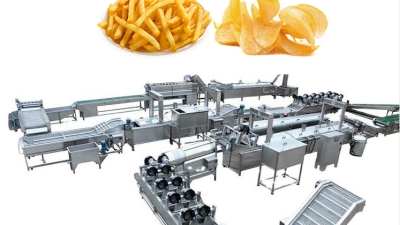Step-by-Step Guide to Selecting the Best Potato Chips Fryer Equipment for Your Business
Table of Contents
- Identifying Your Business Needs for Potato Chips Frying Equipment
- Key Features to Look for in Potato Chips Fryers
- Comparing Different Types of Frying Equipment for Chips
- Understanding the Importance of Energy Efficiency in Fryers
- Budgeting for Your Potato Chips Fryer Investment
- Maintenance Tips for Long-lasting Fryer Equipment
- Revolutionizing Production: The 500kg/h and 1000kg/h Fully Automatic Frozen French Fries Frying Machine Line
- FAQS
- Conclusion
- Related Posts
You know, in the constantly changing snack food world, there's a growing buzz around really high-quality potato chips. As a result, more and more businesses are on the hunt for efficient, reliable fryers to get the job done. If you're trying to figure out what kind of equipment to go with, this guide's got your back. It’s pretty much your go-to resource for picking the right frying gear that can help boost your production. At Shandong Kexinde Machinery Technology Co., Ltd., we’re really into making top-notch food machinery—everything from snack equipment to beverage machines. Our deep experience in designing and building food processing tools means we can share some helpful insights and tips so you can make smarter choices in this competitive market. Whether you're just starting out or looking to upgrade your setup, understanding what to look for in a fryer will make sure your potato chips come out consistently good and your operation runs smoothly.
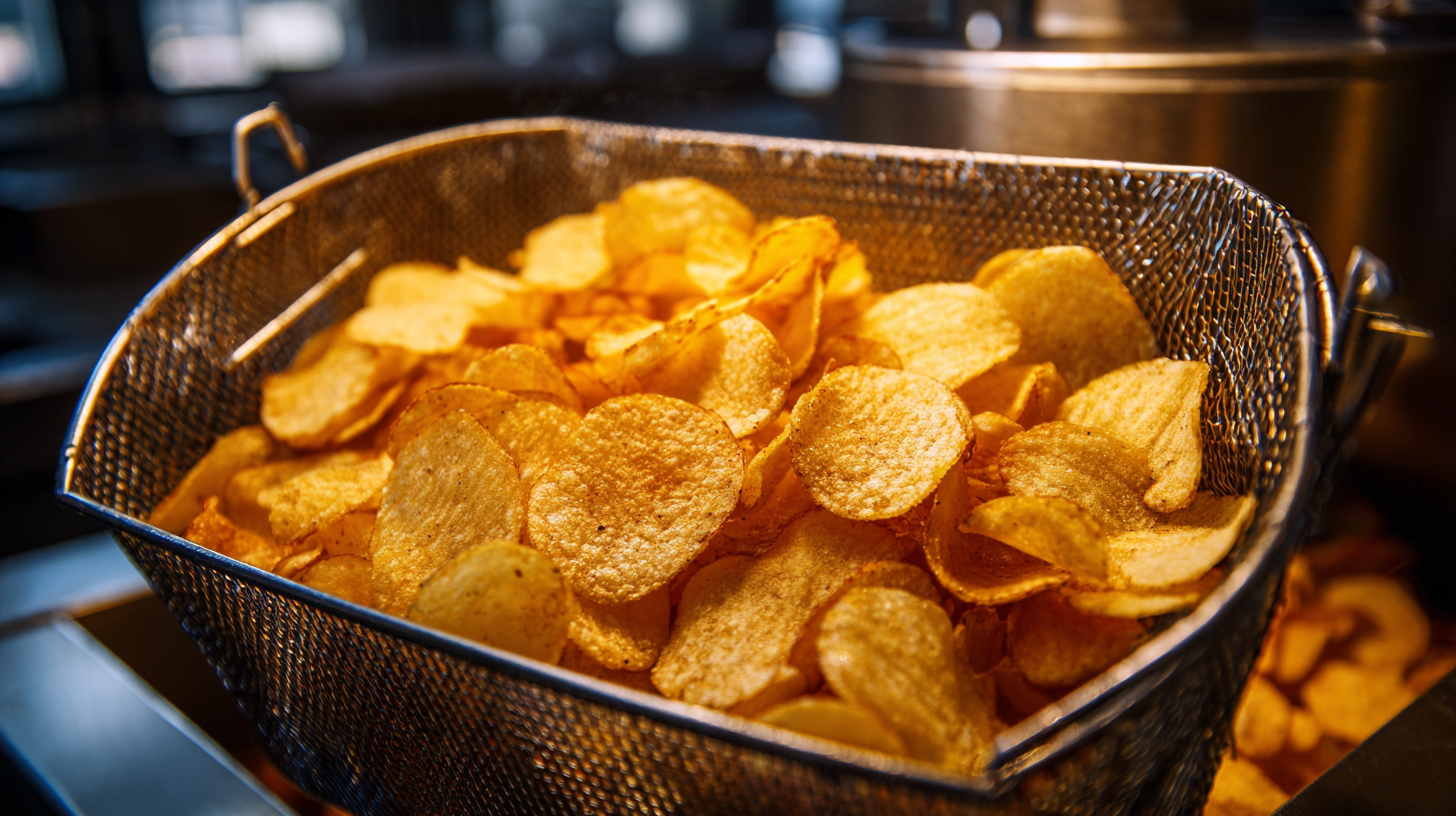
Identifying Your Business Needs for Potato Chips Frying Equipment
Choosing the right potato chips fryer for your business? It all starts with figuring out what you actually need. Think about things like how much you plan to produce, the space you have available, and who you're aiming to serve. If you're just a small shop catering to folks nearby, a compact fryer should do the trick. But if you're looking at big production and want to make a lot of chips quickly, then you'll probably need something industrial-scale — a fryer that can handle high volumes without compromising on quality.
Also, consider the type of chips you want to make. Different frying styles, like batch frying versus continuous frying, come with their own perks. Batch fryers are pretty flexible—they let you try out different recipes and experiment a bit. On the flip side, continuous fryers are great if you’ve got a high demand and need to keep things moving fast. Knowing your product lineup and what your customers like will really help you pick the right equipment. That way, you can serve up top-notch chips while keeping your operations smooth as can be.
Potato Chips Fryer Equipment Selection
Key Features to Look for in Potato Chips Fryers
Hey, so when you're picking out fryer equipment for your potato chip biz, it’s super important to get the key features right. First off, the fryer’s capacity is a big deal. As per a report from Technavio, the global potato chips market is expected to grow at a compound annual rate of over 2% from 2021 to 2025. That’s a clear sign that demand for tasty, high-quality snacks is on the rise. So, going for a fryer that can handle larger batches can really help you keep up with that growth without breaking a sweat.
Another thing you shouldn’t overlook is energy efficiency. Modern fryers with the latest temperature control tech not only make sure your chips are fried perfectly but also help cut down on energy bills. The food processing equipment market is also projected to hit around USD 100 billion by 2025, which shows everyone’s moving towards greener, more sustainable operations. Plus, models that come with programmable settings and oil filtration systems can save you money in the long run and give your products that consistent quality customers love — which, of course, keeps them coming back.
And don’t forget about the material and build quality. Stainless steel is usually the way to go—it's sturdy, lasts longer, and makes cleaning a breeze. Industry studies show that choosing durable, low-maintenance equipment can really cut down your overall costs over time. That means you can keep your prices competitive while serving up top-notch snacks in a growing market, all without stressing over constant repairs or replacements.
Comparing Different Types of Frying Equipment for Chips
When you're trying to pick out the best frying equipment for making potato chips, it helps to understand the different types out there and how they fit with your specific needs. You’ve got a few main options — batch fryers, continuous fryers, and pressure fryers — each with their own perks. For smaller or medium-sized operations, batch fryers are pretty popular because they give you a bit of flexibility — you can test different recipes, make adjustments on the fly. The only catch? They can take more time and require a bit more hands-on effort per batch, which might slow things down a bit.
Now, if you’re running a bigger operation and want to crank out a large amount of chips without breaking the bank on labor, continuous fryers might be the way to go. They move chips through the process constantly, so you get a steady flow and hit that sweet spot of consistent quality. Plus, they tend to save on labor costs going forward, but keep in mind they usually need a bigger upfront investment.
And then there’s pressure fryers. These are great because they help cut down on oil absorption, making for healthier chips — definitely a nice bonus. The thing is, they do require some specialized training to operate safely, so it’s not just a plug-and-play kinda deal.
All these options have their own pros and cons, so it really depends on what your goals are, what kind of budget you’re working with, and how much space you have. It’s a good idea to weigh these factors carefully to figure out which one makes the most sense for your business."
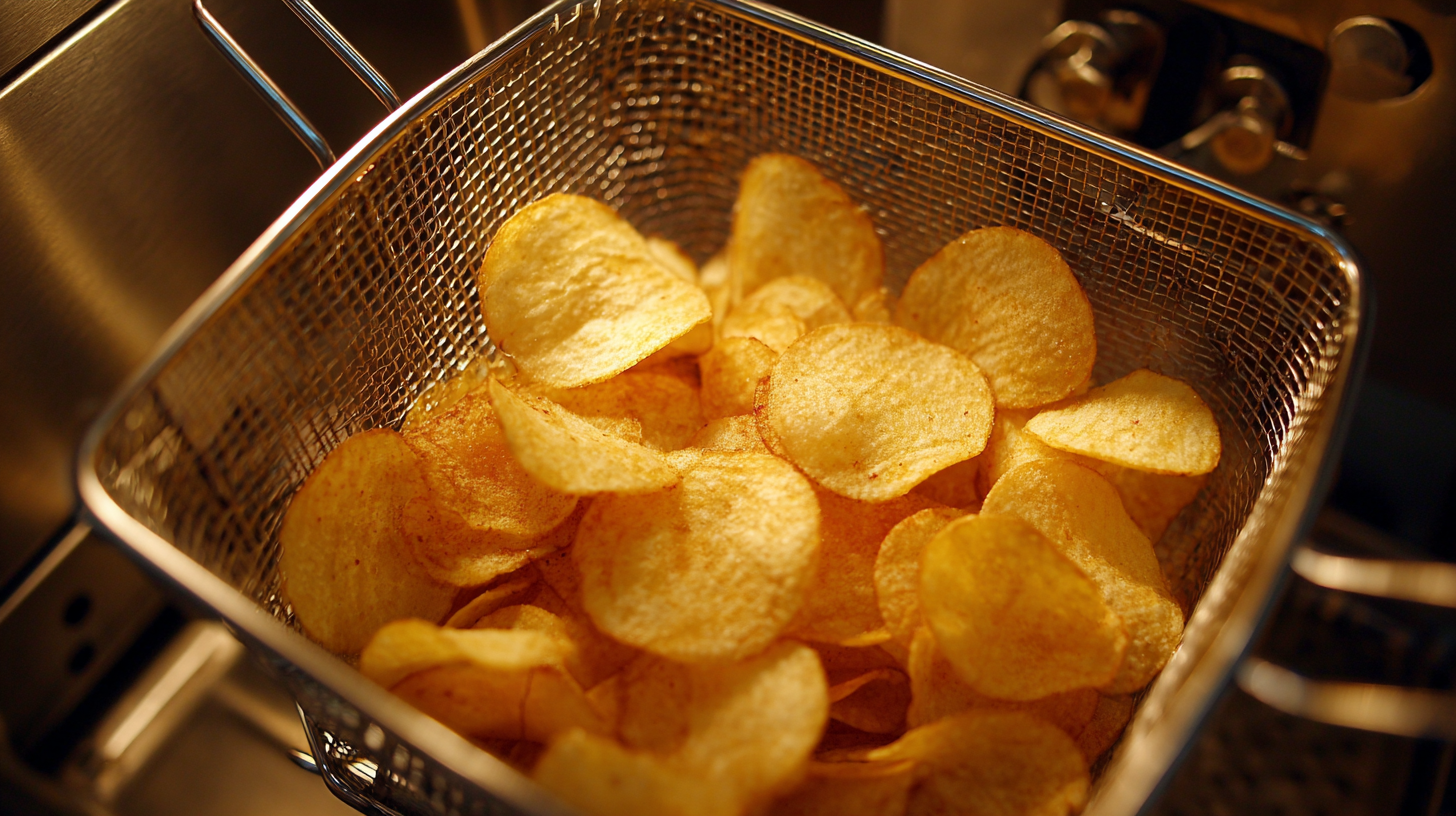
Understanding the Importance of Energy Efficiency in Fryers
So, when you're trying to pick out the best potato chip fryer for your business, one thing you definitely don’t wanna overlook is energy efficiency. I mean, have you heard about air fryers? They've gotten super popular lately because they can make your chips nice and crispy—actually, evenly cooked—while using way less energy than your typical oven. Recent studies show that air fryers can use about 70% less energy compared to traditional frying methods. That’s pretty huge, right? Not only does that help cut down your operating costs, but it also makes your business a bit greener—something we all care about these days, especially in an industry that’s pretty heavy on energy use.
And here’s the thing—when you compare air fryers to regular ovens, the energy savings really add up. Air fryers usually run hotter but for a shorter period, which means they’re using less power overall. For example, many air fryers run at around 1,500 watts, while an oven might gobble up close to 3,000 watts. Over time, that difference can really add up — saving you some serious bucks. So yeah, investing in an air fryer can be a smart move if you’re looking to boost efficiency without sacrificing the quality of your food. Plus, going for more energy-efficient equipment isn’t just good for your wallet, it’s also a step toward being more sustainable—something consumers are definitely noticing and appreciating these days.
Budgeting for Your Potato Chips Fryer Investment
When you're figuring out your budget for a potato chip fryer, it's really important to think about the long-term benefits and ongoing costs of different kinds of frying equipment. Sure, traditional fryers have been around forever and are pretty much the industry standard, but lately, air fryers are gaining a ton of popularity—and for good reason. They can make crispy chips using way less oil, which helps cut down your ingredient expenses and even saves you some on energy bills over time. At first glance, a good air fryer might seem like a bigger upfront investment, but if you look at the savings on oil and electricity down the line, it actually ends up being a pretty smart financial move for lots of businesses.
Since we’re all about creating top-notch food machinery, we recommend thinking about what really suits your operation. For example, a heavy-duty air fryer could handle large volumes if you're producing a lot, plus it’s pretty versatile for different recipes. With the right setup, you can make your processes smoother and boost the quality of your products—things that customers really notice and appreciate. The trick is to find that sweet spot between what you spend initially and the potential boost in profits and efficiency in your snack-making game.
Maintenance Tips for Long-lasting Fryer Equipment
When you're picking out the best fryer equipment for your potato chips business, don’t forget—maintenance really should be at the top of your list. It’s key to ensuring your fryer lasts long and keeps running efficiently. I came across a report by IBISWorld that says the food processing industry is expected to grow by around 2.6% each year over the next five years. That just shows how much more demand there’s going to be for reliable, quality equipment. If you're thinking about investing, going for high-quality fryers from reputable places like Shandong Kexinde Machinery Technology Co., Ltd. can seriously pay off, giving you better performance and durability down the road.
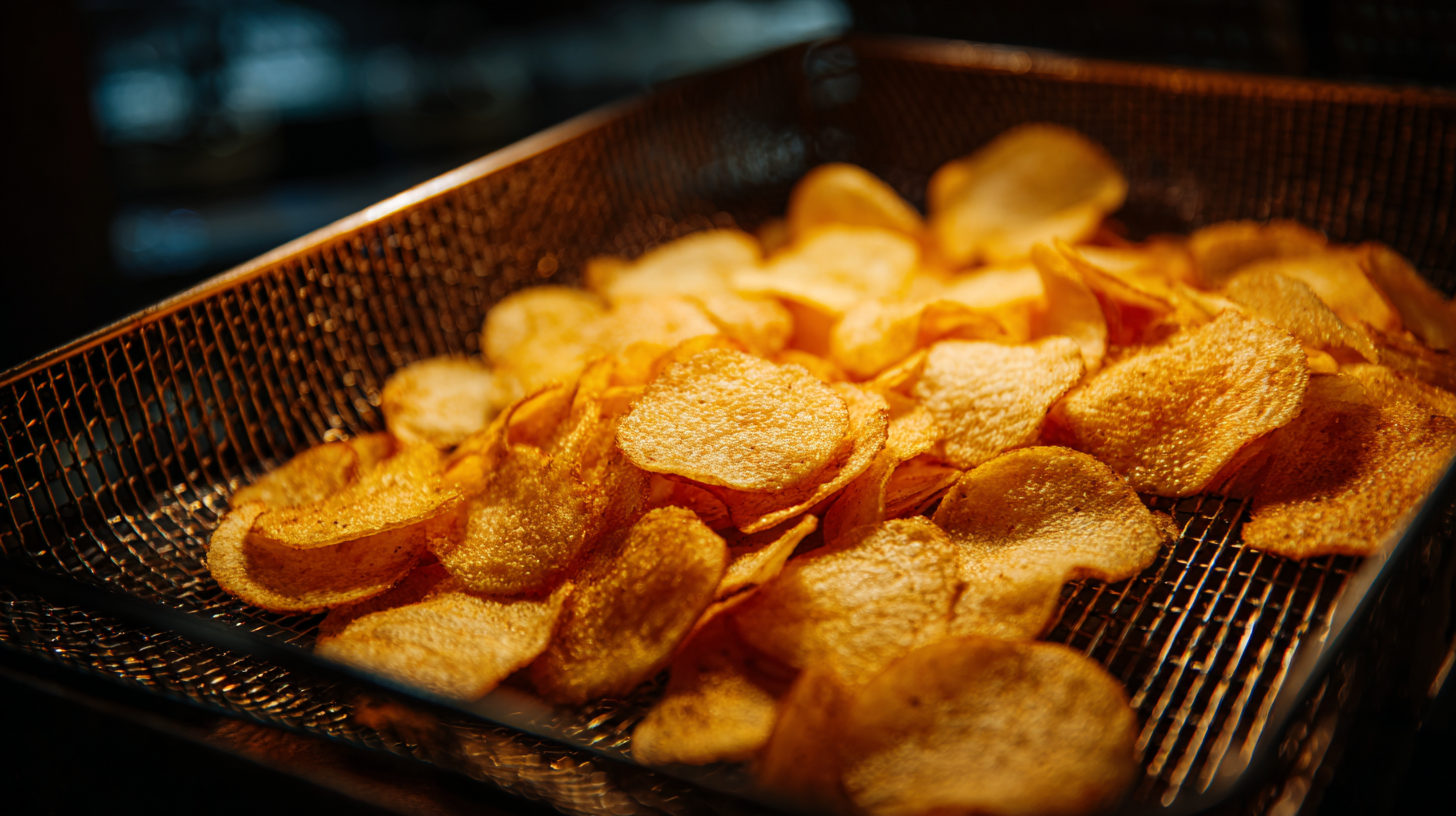
Keeping your fryer in good shape means staying on top of regular maintenance. For example, routinely checking and changing out your oil filters is a good idea—used oil can mess with your chips’ quality and might even cause your equipment to break down eventually. Also, don’t forget to do deep cleaning sessions now and then; I mean, those food residues love to build up and can mess with the fryer’s performance. And honestly, doing regular inspections for signs of wear and tear can save you a ton of money on repairs later on. If you make maintenance a habit, you’ll keep your potato chip production running smoothly and consistently, which your customers will definitely appreciate.
Revolutionizing Production: The 500kg/h and 1000kg/h Fully Automatic Frozen French Fries Frying Machine Line
The advancement of food processing technology has led to the emergence of innovative solutions in the frozen food industry, particularly in the production of French fries. The fully automatic frozen potato French fries frying machine lines with capacities of 500kg/h and 1000kg/h exemplify this revolution. These industrial machines significantly enhance production efficiency while ensuring high-quality output, thus catering to the increasing global demand for frozen fries. According to a recent market report, the frozen French fries market is projected to grow by 5.6% annually, underscoring the importance of investment in advanced manufacturing equipment.
These fully automatic machine lines are designed to optimize the frying process, delivering consistent results with minimal labor involvement. By utilizing cutting-edge technology, the production lines allow for customization based on specific inquiries, enabling businesses to select capacities that align with their operational needs. Furthermore, with features such as energy efficiency and reduced waste, these machines are not only economically viable but also environmentally friendly. The implementation of such modern equipment is pivotal for manufacturers aiming to compete in an ever-evolving market landscape.
In addition to the operational advantages, the quality of the end product is paramount. These frying machine lines ensure that the fries maintain their desired texture and flavor, meeting consumer expectations. With the frozen food segment booming, investing in high-capacity, fully automatic frying lines is a strategic move for businesses looking to enhance their production capabilities and stay ahead of the competition. The increasing shift towards automation in the food industry is set to redefine production standards, promising a bright future for manufacturers equipped with the right technologies.
FAQS
: When selecting a potato chips fryer, important features to consider include fryer capacity, energy efficiency, and the material of construction. Fryers that accommodate larger batches help meet rising demand, while those with advanced temperature control technology can reduce energy consumption.
Fryer capacity is crucial as it enables businesses to produce larger batches of potato chips, which is necessary to meet the increasing demand in the snack market. A higher capacity can enhance production efficiency.
Energy efficiency is vital as it helps maintain ideal frying conditions while reducing energy costs. Fryers equipped with programmable settings and oil filtration systems can improve profitability and consistency in product quality.
Stainless steel is recommended for potato chips fryers due to its longevity and ease of cleaning. A durable construction helps reduce maintenance needs and lowers total cost of ownership over time.
Yes, air fryers are a popular alternative to traditional fryers. They require less oil, which can lower ingredient costs, and may lead to energy savings, making them a financially sound investment.
To prolong the life of your fryer, it's essential to perform regular maintenance such as checking and replacing oil filters, scheduling deep cleaning sessions, and assessing the equipment for wear and tear.
While upfront costs are important, it's crucial to evaluate long-term benefits and operational costs. Balancing initial expenses with potential savings on ingredients and energy can result in a solid return on investment.
Proper maintenance ensures that the fryer operates smoothly, preventing malfunctions and enhancing overall performance. This consistency in production can help meet consumer demands effectively.
Conclusion
When you're trying to pick the best potato chip fryer for your business, it’s really important to start by figuring out what you actually need and what your production goals are. Think about things like how large of a batch you want to fry at once, how precise the temperature control should be, and what kind of frying technology suits your operation. Looking at different types of fryers can really help you find the one that fits your needs perfectly. Oh, and don’t forget about energy efficiency—saving on energy costs can add up big time over the long run.
It’s also super important to budget wisely. You wanna make sure you’re investing in a good quality fryer without breaking the bank. Regular maintenance isn’t just a hassle; it can actually help your fryer last longer and stay in top shape, which is definitely worth the effort. At Shandong Kexinde Machinery Technology Co., Ltd., we’re all about providing high-quality equipment tailored specifically for the food industry. We’ve got some pretty advanced solutions for potato chips frying that can really make a difference.
Related Posts
-
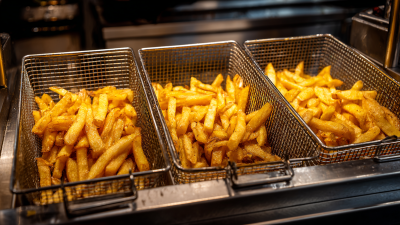
How to Choose the Best Fries Maker Machine for Your Restaurant
-

Choosing the Right Manufacturer: Top Solutions for Your Best Crumb Coating Machine Needs
-
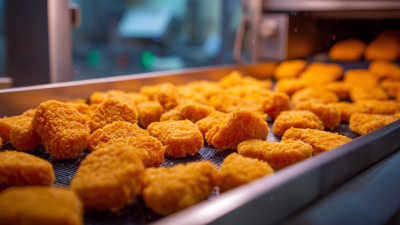
Advantages of Implementing a Chicken Nuggets Processing Line in Your Manufacturing Business
-

Upgrade Your Frying Experience with China Made Best Stainless Steel French Fries Frying Machines
-

Ultimate Checklist for Choosing Your Best Banana Chips Making Machine
-

Explore the Advanced Technical Specifications of the Best Fully Automatic Potato Chips Machine
Blog Tags:


